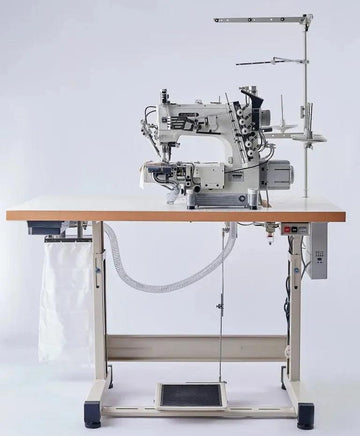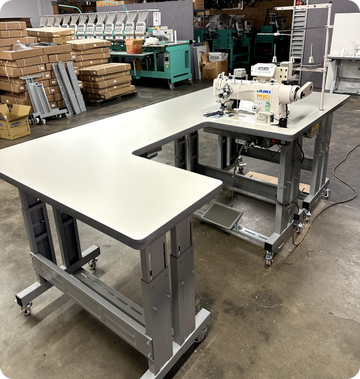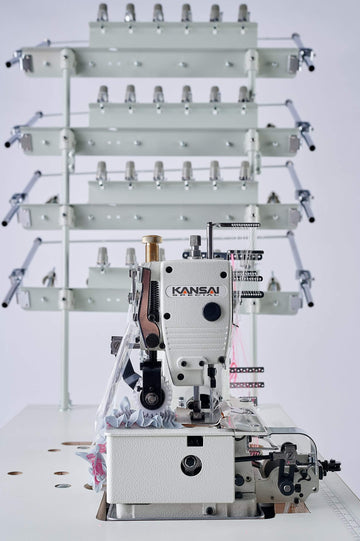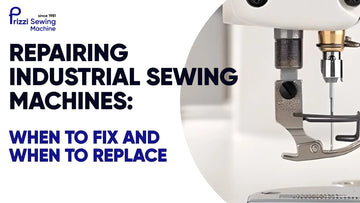Industrial sewing machines are designed to handle heavy-duty work—quilts, upholstery, bags, denim, and other demanding projects. But like any piece of equipment, they eventually need servicing. Whether you’re running a business or using your machine for personal projects, the question often arises: is industrial sewing machine repair worth it, or should you replace the machine entirely?
This guide covers what to consider when dealing with industrial sewing machine repairs, how to assess repair costs, and tips for extending the life of your machine.
Why Industrial Sewing Machine Repair Matters
Unlike basic home models, industrial sewing machines are built for durability and power. Repairing them instead of replacing them can save money and maintain the consistent stitch quality that experienced sewists rely on. However, repairs can vary greatly—from simple tune-ups to major overhauls—so it’s important to know what you’re paying for.
Common Types of Industrial Sewing Machine Repairs
When looking at industrial sewing repair, problems typically fall into three categories:
Routine Service & Cleaning
Dust, lint, and thread buildup can cause tension issues or skipped stitches.
Professional cleaning and oiling (often under $100) are considered essential annual maintenance.
Minor Mechanical Repairs
Replacing feed dogs, bobbin cases, presser feet, or worn belts.
These parts are usually affordable and straightforward to replace.
Major Industrial Sewing Machine Repairs
Motor failures, electronic board issues, or gear replacements.
These repairs can be expensive and sometimes exceed the value of the machine.
Knowing the difference helps you decide whether to approve the repair estimate.
How to Decide If It’s Worth Repairing an Industrial Sewing Machine
When faced with industrial sewing machine repair costs, use these guidelines:
-
Compare repair cost to replacement cost. A general rule: if the repair is more than half the price of a new industrial machine, it may not be worth it.
-
Evaluate machine age and durability. Older models with mostly metal parts are often more repairable than newer budget machines.
-
Consider your sewing needs. If your current model still handles your projects well (quilts, bags, garments, upholstery), repairing may be more practical than replacing.
-
Ask your repair technician. Reputable shops will let you know if a machine isn’t worth fixing.
Read Also: How to Thread a Juki Industrial Sewing Machine?
How to Repair Industrial Sewing Machines Yourself
While some work should be left to professionals, certain basic maintenance tasks can be done at home. Here’s a quick guide on how to repair an industrial sewing machine (or at least keep it in good condition):
-
Clean regularly. Remove lint and dust from the bobbin case, feed dogs, and under the needle plate.
-
Oil moving parts. Industrial machines need consistent lubrication for smooth operation.
-
Check tension. Adjust upper and bobbin thread tension to prevent skipped stitches.
-
Inspect belts and needles. Replace worn belts and use the correct needle size for heavy fabrics.
-
Listen for changes. Unusual noises often signal loose screws, dry gears, or parts in need of adjustment.
These small steps can reduce the need for frequent industrial sewing machine repairs.
When Replacement Is the Better Option
There are times when repairing industrial sewing machines isn’t the best choice. Consider replacing your machine if:
-
The motor or motherboard needs replacing (high-cost repairs).
-
You frequently sew materials your current machine struggles with.
-
Repair costs exceed 50% of the machine’s value.
-
You want features such as automated threading, larger throat space, or specialty stitches not available in your current model.
Choosing a Reliable Industrial Sewing Machine
If you decide against sewing machine repair industrial services, investing in a quality replacement can be worthwhile. Mid-range industrial machines are often the best balance between cost, reliability, and repairability. Look for models with:
-
Proven track records (long production history, few warranty claims).
-
Strong metal construction.
-
Readily available replacement parts.
-
Support for the type of sewing you do most (bags, garments, upholstery, quilting, etc.).
Brands like Pegasus, Kansai Special and Juki industrial lines are often recommended in the sewing community for their reliability.
Final Thoughts
Deciding between industrial sewing machine repairs and replacing your machine comes down to cost, reliability, and your sewing goals. Repairing industrial sewing machines for minor issues or annual servicing is almost always worth it, but once you face major repair bills, upgrading may be the smarter move.
By understanding how to repair industrial sewing machines at a basic level, keeping up with regular maintenance, and choosing the right time to replace, you can keep your projects moving smoothly without unnecessary expenses.










